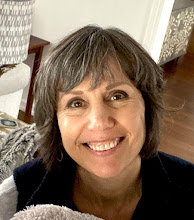
Prior to working on "Standing on My Own Two Feet", I was illustrating the Mallory series with a hand painted black line and computer generated combination technique. Eager to use paints again, I played around with several different styles. Being a mother first leaves me limited time to work, so whatever style I chose, it had to be a quick one! I particularly liked the look of the upper right study. I decided against it for one reason: I wanted babies to easily recognize every part of the boy, from the tippy top of his head...down to his toes. So I chose a style with (roughly) proportionate figures and a clean outlined drawing.
The technique I ended up using was painting on both sides of velum mylar, or a translucent plastic sheet of 'paper'. Will Hillenbrand, an inspiring children's book author and illustrator, has mastered this technique, which is why I called him when my paint started peeling off the mylar. God bless his helpful soul! It ended up being a more time consuming technique than I originally thought, and had less time to finish final art than I originally thought...five weeks! Thanks to my husband for doing ALL the household chores for those long for him and short for me days.
Do check out www.willhillenbrand.com for his great advice on writing and illustrating children's books.




















